1. Musha T, Matsuzaki H. Neuronal impairment and instability. Int J Bioelectromagn. 2007; 9:113–115.
2. Onozuka M, Watanabe K, Nagasaki S, Jiang Y, Ozono S, Nishiyama K, Kawase T, Karasawa N, Nagatsu I. Impairment of spatial memory and changes in astroglial responsiveness following loss of molar teeth in aged SAMP8 mice. Behav Brain Res. 2000; 108:145–155. PMID:
10701658.

3. Shalat SL, Seltzer B, Pidcock C, Baker EL Jr. Risk factors for Alzheimer's disease: a case-control study. Neurology. 1987; 37:1630–1633. PMID:
3658170.

4. Weiner MW, Veitch DP, Aisen PS, Beckett LA, Cairns NJ, Cedarbaum J, Green RC, Harvey D, Jack CR, Jagust W, Luthman J, Morris JC, Petersen RC, Saykin AJ, Shaw L, Shen L, Schwarz A, Toga AW, Trojanowski JQ. Alzheimer's Disease Neuroimaging Initiative. 2014 Update of the Alzheimer's Disease Neuroimaging Initiative: A review of papers published since its inception. Alzheimers Dement. 2015; 11:e1–e120. PMID:
26073027.

5. Frota de Almeida MN, de Siqueira Mendes Fde C, Gurgel Felício AP, Falsoni M, Ferreira de Andrade ML, Bento-Torres J, da Costa Vasconcelos PF, Perry VH, Picanço-Diniz CW, Kronka Sosthenes MC. Spatial memory decline after masticatory deprivation and aging is associated with altered laminar distribution of CA1 astrocytes. BMC Neurosci. 2012; 13:23. PMID:
22376223.

6. Soboļeva U, Lauriņa L, Slaidiņa A. The masticatory systeman overview. Stomatologija. 2005; 7:77–80. PMID:
16340271.
7. Avivi-Arber L. Neuroplasticity and the edentulous patient- toward a paradigm shift in oral rehabilitation. Int J Prosthodont. 2015; 28:115. PMID:
25822294.
8. De Cicco V. Central syntropic effects elicited by trigeminal proprioceptive equilibrium in Alzheimer's disease: a case report. J Med Case Rep. 2012; 6:161. PMID:
22734831.

9. Teixeira FB, Pereira Fernandes Lde M, Noronha PA, dos Santos MA, Gomes-Leal W, Ferraz Maia Cdo S, Lima RR. Masticatory deficiency as a risk factor for cognitive dysfunction. Int J Med Sci. 2014; 11:209–214. PMID:
24465167.

10. Hirano Y, Obata T, Takahashi H, Tachibana A, Kuroiwa D, Takahashi T, Ikehira H, Onozuka M. Effects of chewing on cognitive processing speed. Brain Cogn. 2013; 81:376–381. PMID:
23375117.

11. Stellingsma K, Slagter AP, Stegenga B, Raghoebar GM, Meijer HJ. Masticatory function in patients with an extremely resorbed mandible restored with mandibular implant-retained overdentures: comparison of three types of treatment protocols. J Oral Rehabil. 2005; 32:403–410. PMID:
15899018.

12. Dauwels J, Vialatte F, Latchoumane C, Jeong J, Cichocki A. EEG synchrony analysis for early diagnosis of Alzheimer's disease: a study with several synchrony measures and EEG data sets. Conf Proc IEEE Eng Med Biol Soc. 2009; 2009:2224–2227. PMID:
19964954.

13. Homan RW, Herman J, Purdy P. Cerebral location of international 10-20 system electrode placement. Electroencephalogr Clin Neurophysiol. 1987; 66:376–382. PMID:
2435517.

14. Atcherson SR, Gould HJ, Pousson MA, Prout TM. Variability of electrode positions using electrode caps. Brain Topogr. 2007; 20:105–111. PMID:
17929157.

15. Stewart CM, Newlands SD, Perachio AA. Spike detection, characterization, and discrimination using feature analysis software written in LabVIEW. Comput Methods Programs Biomed. 2004; 76:239–251. PMID:
15501510.

16. Otsuka T, Watanabe K, Hirano Y, Kubo K, Miyake S, Sato S, Sasaguri K. Effects of mandibular deviation on brain activation during clenching: an fMRI preliminary study. Cranio. 2009; 27:88–93. PMID:
19455919.

17. Narita N, Kamiya K, Yamamura K, Kawasaki S, Matsumoto T, Tanaka N. Chewing-related prefrontal cortex activation while wearing partial denture prosthesis: pilot study. J Prosthodont Res. 2009; 53:126–135. PMID:
19345661.

18. Hirano Y, Obata T, Takahashi H, Tachibana A, Kuroiwa D, Takahashi T, Ikehira H, Onozuka M. Effects of chewing on cognitive processing speed. Brain Cogn. 2013; 81:376–381. PMID:
23375117.

19. Yamazaki K, Wakabayashi N, Kobayashi T, Suzuki T. Effect of tooth loss on spatial memory and trkB-mRNA levels in rats. Hippocampus. 2008; 18:542–547. PMID:
18446825.

20. Burke DM, Mackay DG. Memory, language, and ageing. Philos Trans R Soc Lond B Biol Sci. 1997; 352:1845–1856. PMID:
9460069.

21. Perry RJ, Hodges JR. Attention and executive deficits in Alzheimer's disease. A critical review. Brain. 1999; 122:383–404. PMID:
10094249.

22. Salat DH, Buckner RL, Snyder AZ, Greve DN, Desikan RS, Busa E, Morris JC, Dale AM, Fischl B. Thinning of the cerebral cortex in aging. Cereb Cortex. 2004; 14:721–730. PMID:
15054051.

23. Morokuma M. Influence of the functional improvement of complete dentures on brain activity. Nihon Hotetsu Shika Gakkai Zasshi. 2008; 52:194–199. PMID:
18467791.

24. Klimesch W. EEG alpha and theta oscillations reflect cognitive and memory performance: a review and analysis. Brain Res Brain Res Rev. 1999; 29:169–195. PMID:
10209231.

25. Lund JP. Mastication and its control by the brain stem. Crit Rev Oral Biol Med. 1991; 2:33–64. PMID:
1912143.

26. Masumoto Y, Morinushi T, Kawasaki H, Takigawa M. Spectral analysis of changes in electroencephalographic activity after the chewing of gum. Psychiatry Clin Neurosci. 1998; 52:587–592. PMID:
9895206.

27. Masumoto Y, Morinushi T, Kawasaki H, Ogura T, Takigawa M. Effects of three principal constituents in chewing gum on electroencephalographic activity. Psychiatry Clin Neurosci. 1999; 53:17–23. PMID:
10201279.

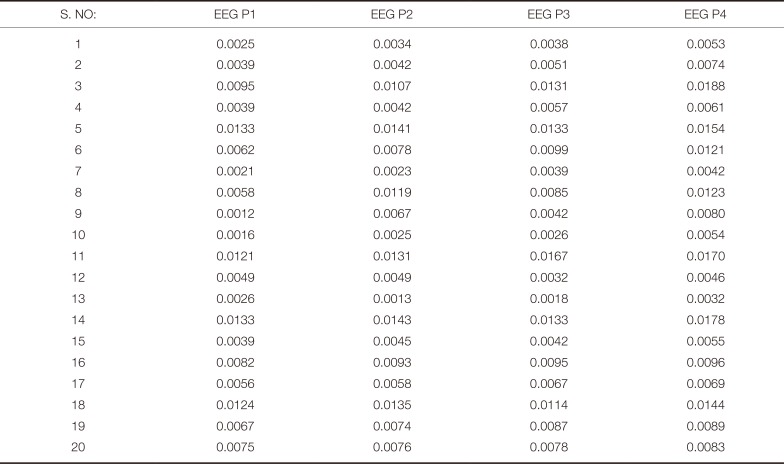
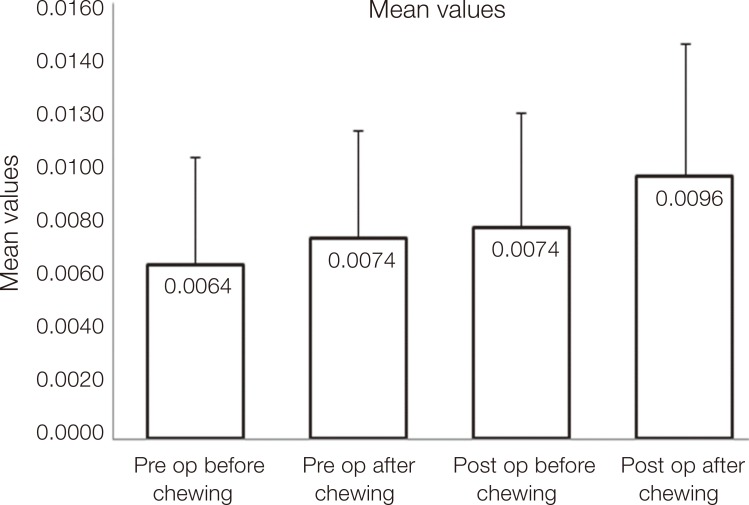





 PDF
PDF ePub
ePub Citation
Citation Print
Print



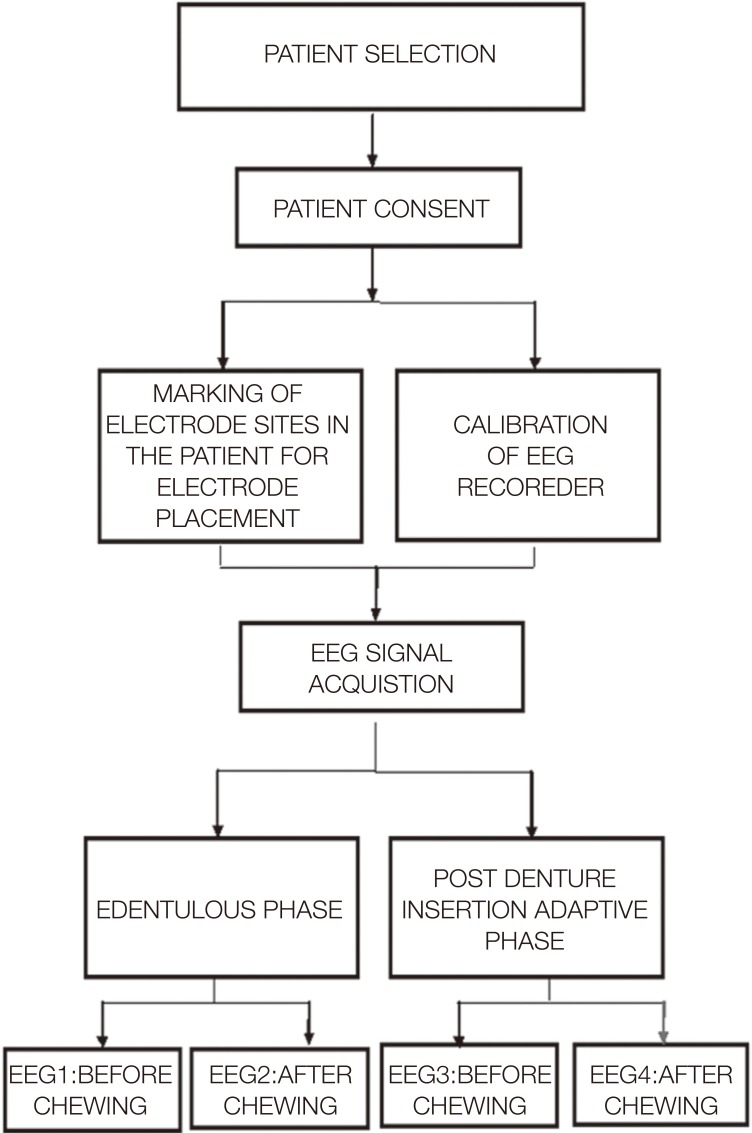
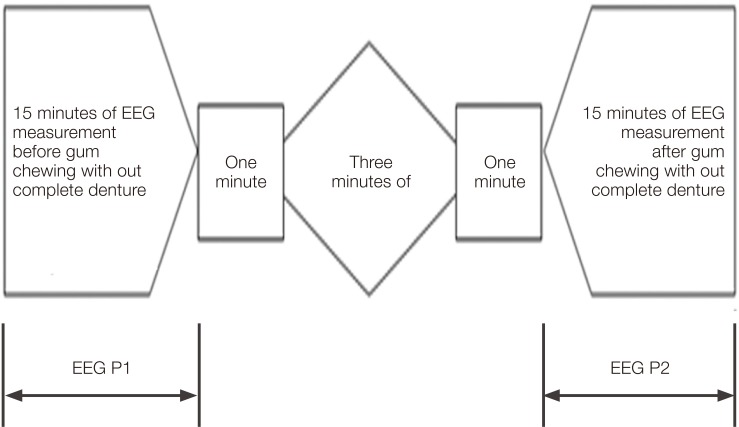
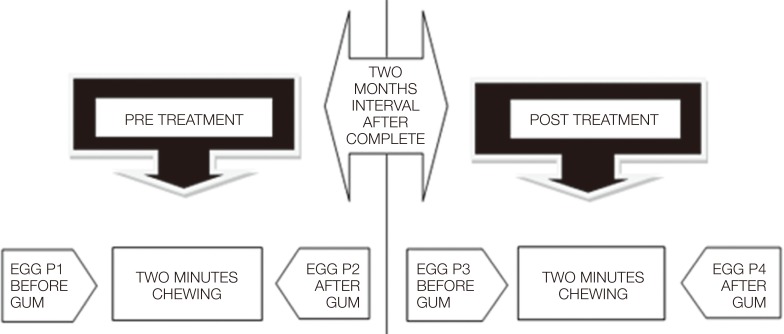
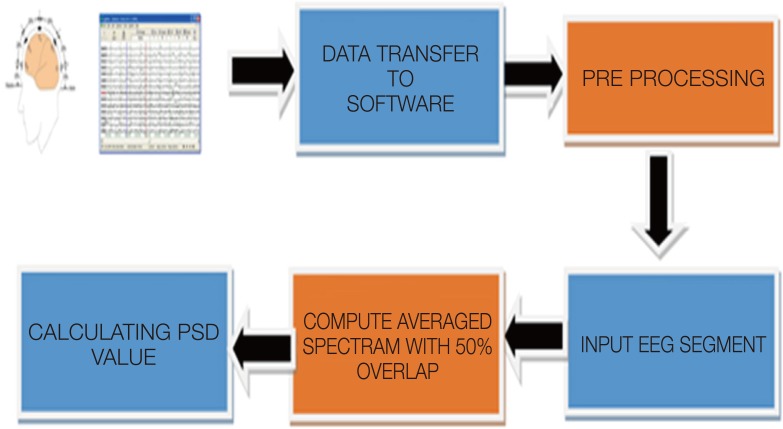



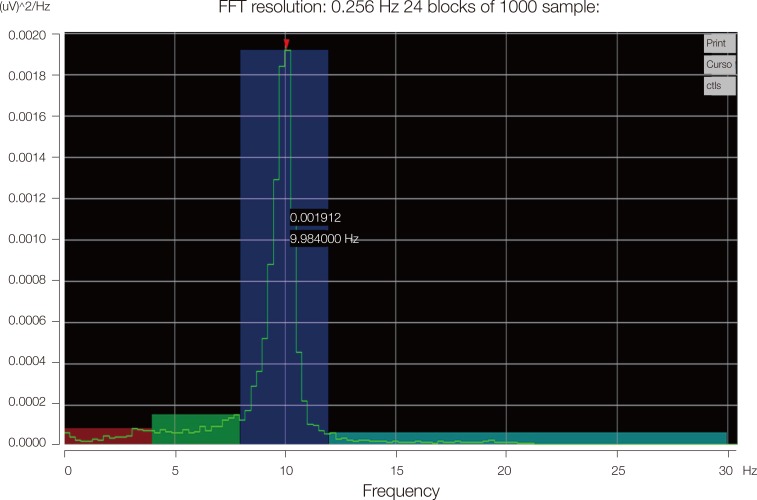
 XML Download
XML Download